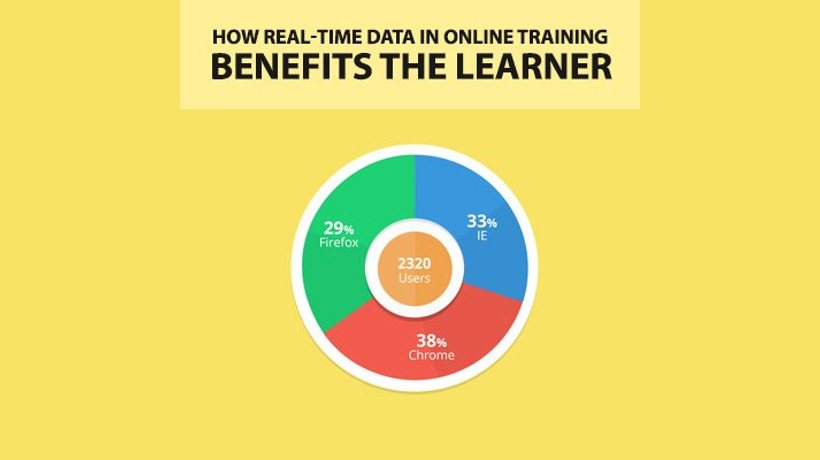How Is Alternative Data Used In Product Marketing?
The eCommerce space has grown dramatically in the past few years and continues to evolve. According to Statista, online sales globally have risen from $1.35 billion in 2014 to $4.2 billion in 2020. As consumers spend more time on the internet, the potential for gathering data directly from potential customers grows. Alternative data’s impact on eCommerce cannot be underestimated, and alternative data collection methods such as data crawling using proxies to obtain User-Generated Content have become widespread.
What Is Alternative Data?
Alternative data can have multiple definitions depending on the context; it originated from the finance industry and is used specifically toward adding insights into the investment process. It is meant to be an alternative to traditional financial data collected from SEC filings and press releases and is derived from transactions, satellites, and the internet.
Nowadays, alternative data focus is on User-Generated Content, such as product reviews, social media updates, and customer service chats. The concept behind using this data is that the most reliable information about products is derived from the customers themselves.
This is important because, increasingly, all business strategies are driven by data. From product marketing, product development, customer support, sales, and communication, companies realize that a data-driven approach is the best way to remain competitive in a crowded market. User-generated data is gold because consumers create it.
The internet has provided a significant opportunity to listen to the customer’s voice and listen to their perspective about brands. Although surveys can still be useful, social media posts and reviews are inspired by consumers' spontaneous desire to express an opinion and need no encouragement from companies. User-generated data is self-generating and boundless.
How Is Alternative Data Collected?
The sheer amount of user-generated information on the web is a boon but also a challenge. To collect it and analyze it can seem like a major task. Cutting and pasting and reading every post or review would require countless hours that can be better used in developing a brand. Fortunately, automating these tasks and using AI for data analytics is simple.
Having the right tools is the basis for an effective alternative data strategy. A web crawler explores the web and locates relevant texts. A web scraper retrieves these texts by lifting the HTML code and storing the information in databases. It is important to use a web proxy to hide the user's IP address and prevent getting blocked by a website.
When the information is collected, AI tools perform sentiment analysis to determine the attitude of the people who wrote the reviews, social media updates, and other User-Generated Content. This analysis results from data that can be calculated and used to generate strategies for product development, customer service, and improvement in all aspects of the business.
How Do Companies Use Alternative Data?
The most successful companies are using alternative data to fuel their strategies. It is useful to learn something from the retail giant, which has a 14% global market share. The most familiar example is Amazon’s groundbreaking customer recommendations.
When customers visit the site, Amazon will suggest products similar to the items they purchased or browsed during the previous visit. This personalized marketing technique has been used with success by other companies.
Starbucks is skilled at encouraging customers to promote its products by creating selfies or photos on social media. When customers participate, the company can create a connection with them and promote new products. The coffee giant’s annual red cup contest is a prime example.
Every year in December, Starbucks invites customers to submit photos of coffee drinks in Starbucks’ signature red cup. The finalists are given a discount on items. This approach includes customers in the marketing process and creates data that can encourage repeat sales.
Delaware North, a hospitality and food company, organizes social hubs among its brand participants and customers and invites them to submit and share photos of their vacation and restaurant experiences. Sharing generates discussion, which increases customer engagement and provides user-generated data for Delaware North.
BMW encourages its satisfied customers to share photographs and videos of their cars and driving experiences. Many car owners love to show off their cars, and BMW allows customers to do this while providing photos, positive reviews, and user feedback, contributing to product development and brand awareness.
How Alternative Data Revolutionized The Product Marketing Space
Since alternative data is collected from actual users, it has taken the guesswork and assumptions out of marketing. There is no need to predict what customers want when they say so directly on social media and review sites. Alternative data has changed marketing through the following:
Consumer Sentiment
There is no mystery how consumer sentiment drives conversions and sales. Naturally, people are more likely to purchase products they like and continue doing business with reliable brands. How do companies know how their products and services are viewed? The answer: through social media posts and customer reviews.
However, the sheer multiplicity of posts and reviews may seem as much as an obstacle as a boon. The notion of reading every review or post may sound exhausting or impossible. That is why consumer sentiment tools are a necessity for creating an alternative data strategy. These tools analyze texts and assign an attitude to each one based on categories.
These tools assign numerical ratings based on consumer sentiment. The numbers make it possible to calculate and quantify consumer attitudes to products and services. These solutions take user-generated texts and transform them into actionable alternative data. At the same time, it is still possible to zero in and look directly at phrasing when qualitative information is needed.
Efficient Competitive Analysis
Not only is it important to retrieve User-Generated Content from one’s own customers, but it is also useful to do similar kinds of research on competitors’ customers. After all, every company hopes to eventually convert rival customers, claim them as their own and take market share.
On the web, it is fairly easy to do competitor research. Examine rival websites to analyze content, keywords, and visitor behavior. Companies can be notified about mentions of competitors as well as their own. When a rival brand or service is mentioned in reviews or social media, retrieving and analyzing the content can provide valuable insights.
Web crawling techniques and web scraping tools applied on a competitor's websites should be accompanied by web proxies for anonymity since websites often block activity if they suspect competitors do it. Proxies hide IP addresses so research can be done without revealing the user’s original IP address. Keeping track of competitor strategies through alternative data can be an effective way to win market share.
Tracking Customer Behavior
Alternative data can be useful for tracking digital footprints. There are always traces of web activity. Becoming familiar with actions taken on websites, purchases, status updates and comments, reviews, and links consumers click can provide accurate consumer behavior predictions.
The real-world analogy of the ability to track consumer behavior online would be similar to a physical store owner knowing what purchases consumers made before visiting their store. For instance, maybe on Fridays after work, a certain customer demographic may stop off at a gourmet cheese shop before purchasing at the owner’s wine shop.
Knowing this encourages lucrative cross-promotion with the cheese shop or advertisements for the wine shop close to the cheese shop.
Online data can determine what links customers click or how long they remain on certain web pages. This activity can be like customers who visit the cheese shop first in the example above. Tracking customer behavior provides insight on how and where to focus marketing material.
Fine-Tune Messaging
The best way to get to know consumers is to speak to them as if you know them. Alternative data helps pinpoint their preferences and habits. Hence, it is easier to sound more like a friend giving a trustworthy recommendation for something they need than a company trying to encourage them to buy something.
The wording of reviews and social media posts provide clues on how to phrase customer interactions through emails, web content, and customer service conversations. Popular search terms become effective keywords to drive customers to your website. Similarly, reflecting the way consumers speak about brands and products demonstrates that your brand understands them.
When analyzing User-Generated Content, not only is it useful to automate the process to produce consumer insights, but to look closely at some of the phrasings of reviews and social media posts and zero in on words that are used repeatedly by customers. If they hear something resembling their words spoken to them, they are more likely to pay attention and feel attraction to a brand.
Alternative Data For Business Strategy Success
Alternative data is the key to successful business strategies. Companies have learned that data doesn’t lie, and customers are motivated to give honest feedback on review sites and social media. Collecting this information and transforming it into actionable data is the best way to get a business off to a successful start in 2021.









